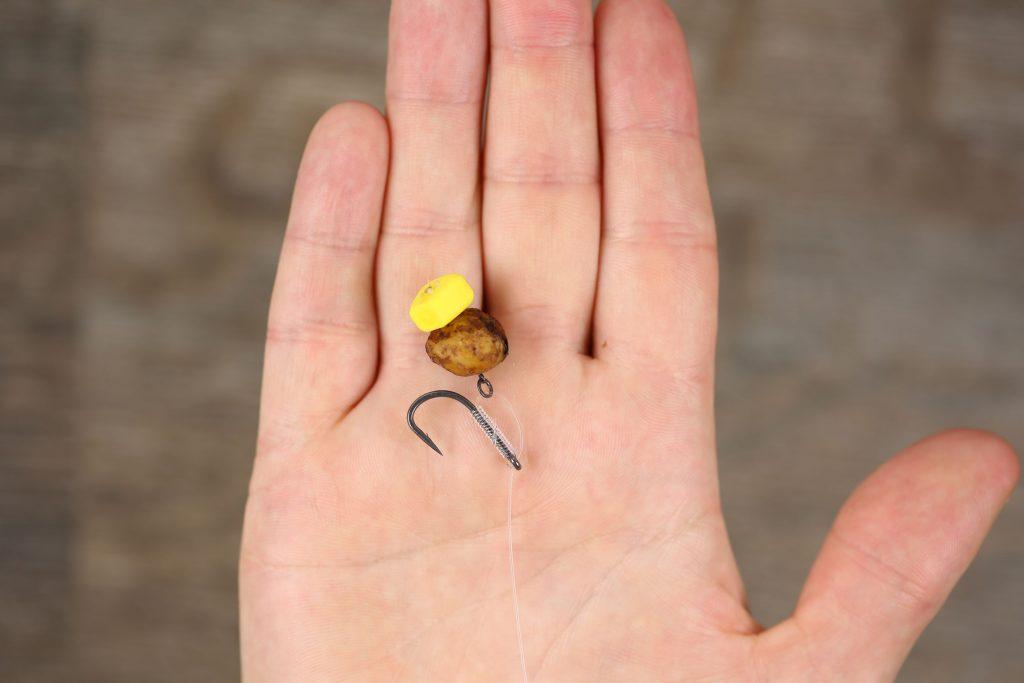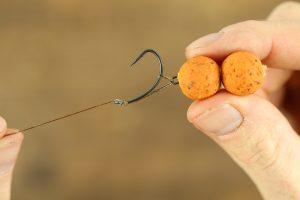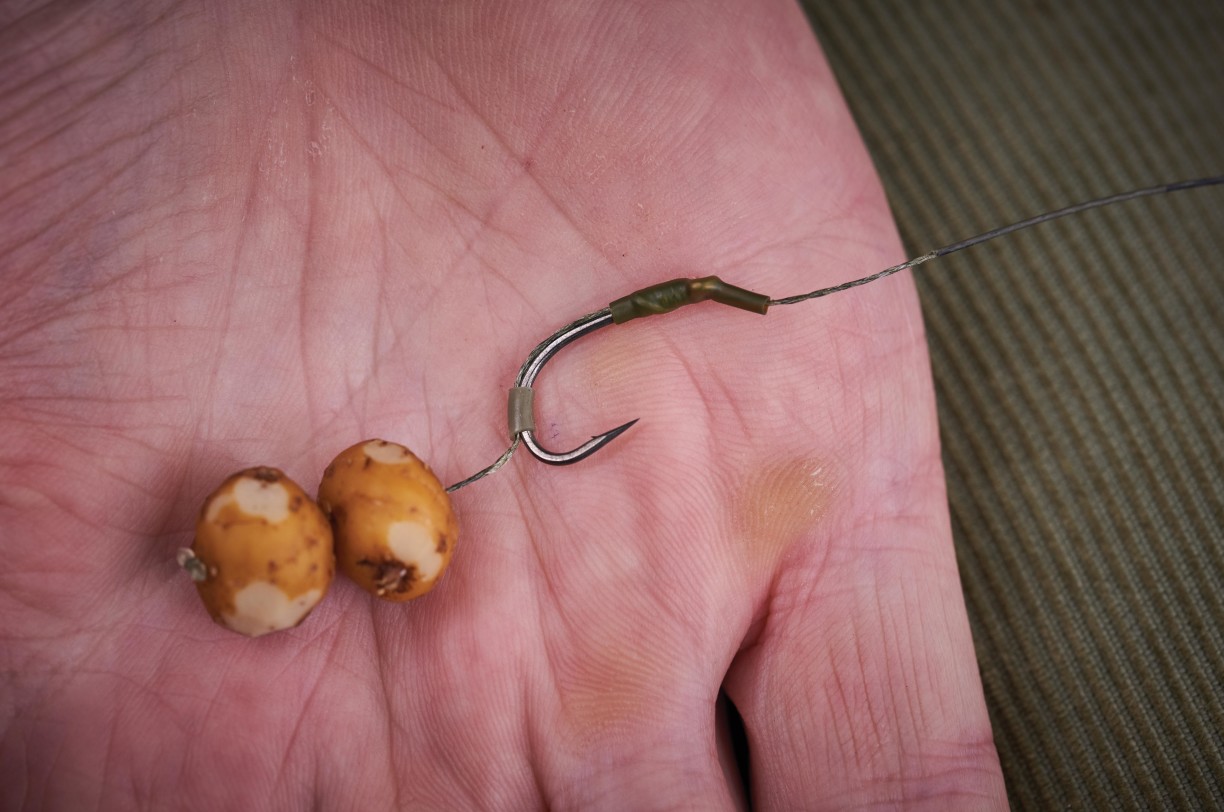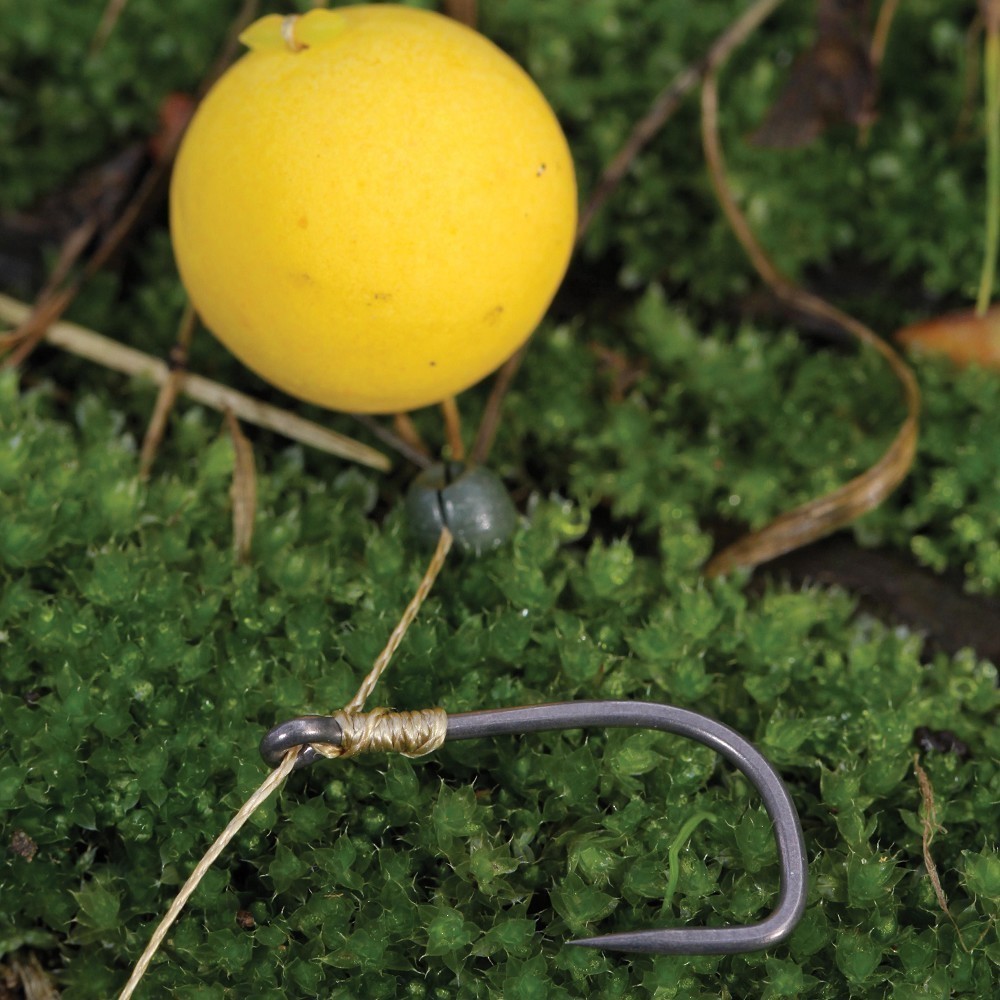A bait hard on the bottom, right where your targets are naturally feeding, can be unbeatable. But what is the best rig to use to present a bottom bait?
Although we tend to see carp fishing as angler against nature, on busy commercial waters it’s more often a case of angler versus angler, with each person competing against the swim next door for the carp’s attention. In this instance, doing something a little bit different can pay dividends – and as many anglers will be using buoyant hookbaits of some sort it’s well worth knowing how to skilfully deploy an attractive bottom bait and what rig to fish it on.
Which fishing situations to use a bottom bait rig?
Before we look at rig mechanics you need to be aware of the limitations of bottom-bait rigs. With a sinking hookbait attached, your hook is much more likely to thud into the lakebed and potentially become caught in weed, silt or debris, or be masked entirely. On hard, clean areas such as gravel, clay or firm silt, this isn’t so much of a problem, but wherever you cast a bottom bait there are certain things you can do to improve your presentation.
How to maximise presenation with a bottom bait rig
Always hit the clip on your reel, or feather your cast just before it hits the water, to help force your hooklink and bait away from the lead. Doing this will also make your bait fall through the water a fraction behind the lead, giving it the best possible chance of lying neatly once it touches down. To further improve these chances, adding dissolving foam nuggets to your hookbait will keep it suspended after the lead has hit the bottom, allowing it to gently flutter to the lakebed once the foam melts. A stiff-ish hooklink will prevent your bait from dropping straight onto to your lead in this situation, and if you don’t have dissolving foam then an old pop-up or two in PVA mesh is a great alternative. Both the foam and the pop-ups act as great sight markers to bait up to once they’ve detached from the hook and hit the surface.
Moving on to the rigs themselves, there are a number of tried-and-tested bottom-bait presentations worth exploring.
Fluorocarbon D rig
A fluorocarbon D rig – sometimes associated with a type of Korda hooklink material and known as the ‘IQ’ D rig – is a really versatile offering that provides tangle-free stiffness and great hooking mechanics. The fluorocarbon hooklink is well concealed underwater and will push away from the lead every time. This presentation can be fished in shorter lengths over hard spots or lengthened to lie neatly over silt or low-level weed. The D-rig aspect works on the principles of the blowback rig, meaning the hook stays in position even if the fish tries to expel the bait from its mouth.

Combi Rig
If the springy, inflexible nature of fluorocarbon leaves you a little cold, you can add some suppleness to your presentation by creating a combi rig. By tying on the hook (and creating the hair) with braid and then attaching this very short length to a fluorocarbon ‘boom’ you can get the best of both worlds – the tangle-free separation from the lead provided by the stiffer material and the more natural bait movement offered by the braid. Use an Albright knot to join the two hooklinks together, or, if you’re less confident in your knot-tying ability, a modern coated braid can be used to form a combi rig. Simply remove the outer coating on the section nearest the hook.

Flipper Rig
Using the weight of your bait to aid hooking is something Terry Hearn advocates in one of his favoured bottom-bait rig, the flipper rig. The key part of this presentation is the way the hair is trapped on the bend of the hook by a piece of silicone. It might look unnatural if you’re used to seeing hairs exit off the back of the shank, but it creates the perfect mechanics to allow the weight of the bottom bait to flip the hookpoint into the fish’s bottom lip with unerring consistency. As with many bottom-bait rigs, a wide-gape hook with a beaked point is perfect for use on this rig. The beaked point – slightly tucked back like a bird of prey’s talons – affords the hook a little bit more protection, stopping it from blunting as it moves about on hard, gravelly areas.

KD Rig
A rig that has flitted in and out of fashion – and currently appears to be largely underrated – is the KD rig, named after Kenny Dorset. Tied almost exclusively with curved-shank hooks, these rigs are also designed around the way the hair exits the hook. By allowing the hair to come out halfway up the knotless knot you create a super-aggressive angle of attack which can be very hard for fish to deal with. These rigs are best tied with relatively supple braid, but can be joined to stiffer materials to form combi rigs.

Whatever rig you choose for your bottom bait, remember that there’s much less margin for error when compared with pop-up presentation. A Chod Rig, for example, can be pub-chucked just about anywhere and still present a bait cleanly. With a bottom bait, you will have to give a lot more thought to where it lands and how that will have an impact on its efficiency.
